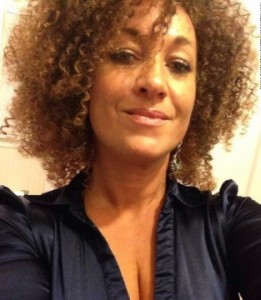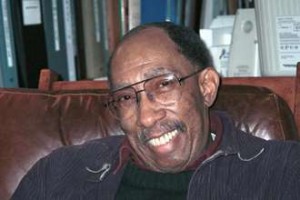We are all now familiar with the story of Rachel Dolezal, (the white woman who identified herself as Black for many years) and have heard many strong opinions about it. It struck me that her journey resonates with that of those I interviewed for my book, Crossing the Boundary – Stories of Jewish Leaders of Other Spiritual Paths. True, there is a major difference. Religion is not the same as race. The folks in my book chose different religious paths from their birth family and in some cases (not all) chose to no longer identify with being a Jew. It was a choice they could make about belief and practice and identity. Racial identity, we are told, is a more biological reality. Black people can’t choose to identify as white, which is why the usually sober New York Times columnist, Charles Blow, was so irate about Dolezal’s behavior. (See “The Delusions of Rachel Dolezal.” But is it really so different, so black and white?
In all honesty, as a white person, I was uncomfortable weighing in on this issue. But I felt great resonance in the following article by Julius Lester in which he shares his personal experience around identity. Lester, a Black civil rights activist and writer, shocked many people when in 1982 he chose to convert to Judaism. His reflections on racial and religious identity have the ring of deep wisdom. Please feel free to comment and share your own experiences with the nature of religious or racial identity.
Blessings,
Alan
JULIUS LESTER
“My maternal great-grandfather was a German Jewish immigrant named Adolph Altschul. His wife was a freed slave woman, Maggie Carson. She was so light-skinned she could have passed for white, and one of Adolph’s and Maggie’s daughters did when she grew up. In the 1870 census records Adolph and Maggie’s names appear. Everyone’s race is indicated by a “B” for black, except for Adolph. Beside his name there is a “W” for white. Even though he was white and Maggie could have passed for white, they chose to live in the black community.
Part of my childhood was spent in Kansas City, Kansas, during the time when that city, of all the ones in Kansas, chose segregation. My father was a minister, and in his church there were two women named “White.” One was referred to as “Miz White,” the other as “Miz White White.” Miz White was black; Miz White White was white. She was not married to a black man, and I do not know why she chose to live in the black community. But she did, and she was accepted as one of us.
Growing up as I did in Kansas, Arkansas, and Tennessee, I was defined by the system of racial segregation. For the sake of my survival I learned to say “sir” and “ma’am” to white people, learned to ride on segregated buses without showing anger, learned not to stare at white people, especially white women. I learned that I had to conform to what society thought was right and good, and that included the very proper mores of black middle-class life. I attended an all-black college and reprimanded by the Dean of Students because I wore jeans on campus and sat on the library lawn playing my guitar. That was not the image the school wanted to project.
But my first year college (1956) an older student introduced me to Existentialism and the work of the French philosopher, Jean Paul Sartre. “Existence precedes Essence,” he wrote in Being and Nothingness. What that meant was because society sought to impose definitions on who I was and what I could do, the simple fact was that my existence came before the meaning society sought to impose on me. In other words, I was free to define myself. Neither whites nor blacks could tell me who I was if I didn’t let them. When the Dean of Students told me I couldn’t wear jeans and sit in front of the library playing the guitar, I continued wearing jeans and playing the guitar on the library lawn. I would live by my definitions of who I was, but to do so, I had to be willing to accept the consequences. I was.
I was around seven when I learned that my maternal great-grandfather was a German Jew. Thus began a journey that culminated in my conversion to Judaism in 1982. I was surprised by the antagonistic response I received from many blacks. The general consensus seemed to be that I was no longer black. I had people tell me that a person could not be a black and a Jew. Blacks I had known for years acted differently around me, as if I had changed personalities. Yet, I knew that if I had converted to Catholicism, no one would have cared. If I had become a Muslim, blacks would have embraced me. But I had become a Jew, and somehow, for many, that obliterated my identity as a black person.
Identity is not so simple. I learned that from a white female student in one of my black literature classes. She was the only white student in the class. She was also the only student in the class who seemed to have a visceral feel for the literature we studied. She understood things I had to explain to the black students in the class. And she had grown up in a small town in Massachusetts where there were no blacks. Yet, as far as I was concerned, she was black, even though she had blonde hair and blue eyes. She had an understanding and grasp of the black experience that went beyond the intellectual. And she went on to become a professor of black literature.
Identity is mysterious. When I was a child I used to play over and over on the piano a simplified arrangement of “Kol Nidre.” I was haunted by that melody. I had no idea where it came from or what it meant, but I loved it. Many years later I attended synagogue one Saturday morning when the daughter of a friend was being called to the Torah as a bat mitzvah. This was some years before my conversion, and I remember sitting in the service listening to the cantor singing the various melodies of the Shabbat morning service, and I found myself almost in tears because I wanted to pray in song as she (the cantor) was doing, and I never would because I wasn’t Jewish. It was three years after my conversion that I finally began to lead parts of the Shabbat morning service, and I eventually became cantor for the High Holy Days. That first year I was surprised when Israelis, when people who had survived the Holocaust came to me after services to say that my singing reminded them of when they’d been children in synagogue with their grandparents. I didn’t understand how that could be, and yet, I knew that praying in song in Judaism meant so much more to me, evoked a passion and love from me that singing black music never had.
Identity is unfathomable. A few years ago I had my DNA done. I was not surprised to learn that my ancestry was 70% Sub-Saharan African and 29% European. Of that 29% European, however, 19% was European Jewish. I would never have dreamed that almost one-fourth of my DNA was Jewish. But I learned something even more important that was transformative. Before the last Ice Age, what is now the British Isles and northern Europe was one land mass called Doggerland. Doggerland was unknown until some years ago, when fishermen would find in their nets, bones, pottery and other artifacts. Archeological work on the sea floor found the remains of what they called Doggerland. Ten thousand years ago, when the seas began to rise, the people of Doggerland began leaving, some to what is now northern Europe, some to what is now Great Britain. Some of my DNA was traced to Doggerland.
Identity is more than this me. The African part of my DNA traces to Benin, Togo, Cameroon, Congo, Ivory Coast, Ghana, Nigeria, Sudan and Ethiopia. The European traces from western Europe through Great Britain, and there is less than 1% which is East Asian. What was transformative was realizing that I am not only the child of W.D. Lester and Julia B. Smith Lester. I am also the issue of an untold number of women and men who knew each other, in the Biblical sense, over a period of 10,000 years, at least. (I am most intrigued by the East Asian who left 0.7% of her or his DNA as part of me.)
Who am I? There are not enough words to describe who am I, who any of us are, because we all carry within us traces of lives going back ten thousand years and more. What a shame that there are those who would reduce the wonder of being human to such a narrow and restrictive a concept as race.
There is a woman in Spokane, Washington, who identifies herself as black. Her birth certificate says she is white. Social media has abused her viciously by calling her a liar; her picture has been on the front page of the New York Times. I keep waiting to hear what harm she has done to merit such scorn. But all I read says that she has done very good things in her work as a black woman. Yet, so many Americans are acting as if she has injured each of them personally. I’m sure she thought all she was doing was living her life.
In 1982 I drove my mother down to Pine Bluff, Arkansas, where she was born and raised. Her grandfather, Adolph Altschul, is buried in the Jewish cemetery there; her grandmother, Maggie Carson, is buried on property the family owns. Most of Adolph and Maggie’s children are also buried there. My mother was a very taciturn and angry woman, but on that trip she spoke to me as she never had, and it was only a couple of sentences: “I had a hard time growing up. White people didn’t like me because I looked white but I wasn’t. Black people didn’t like me because I was black but I looked white.” That was all she said, but it was enough for me to see into her life as I never had.
There is a woman in Spokane, Washington, being told by millions of people who she isn’t. But she knows who she is, and I hope she can hold onto her existential identity despite the anger and hatred she is being subjected to.
Identity. It is not only the color of our skins. Ultimately, who we are is as mysterious as the universe of which each of is mere dust. I hope that Rachel Dolezal will one day be able to celebrate the mystery and be who she is without anyone being so presumptuous as to tell her she isn’t.”

